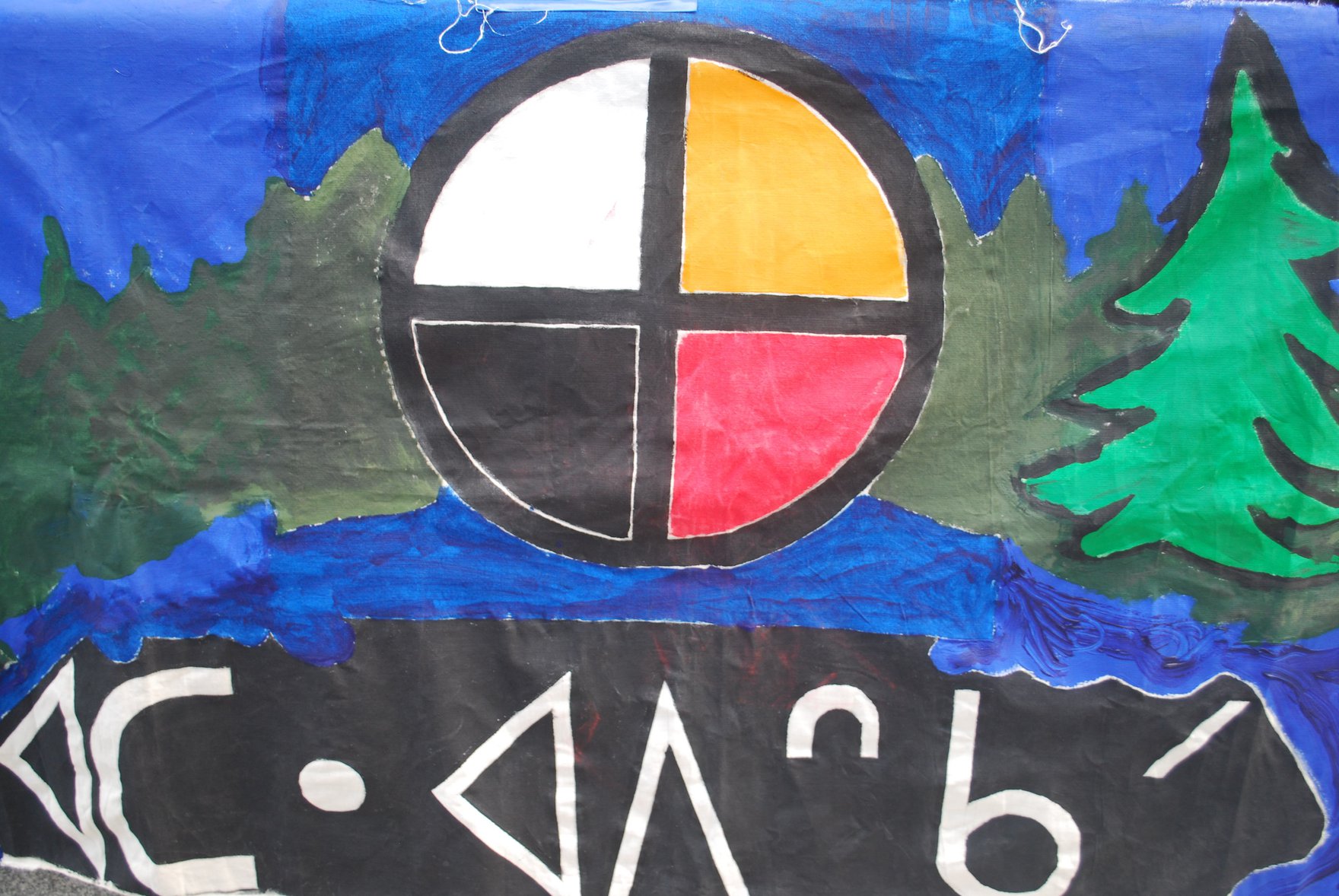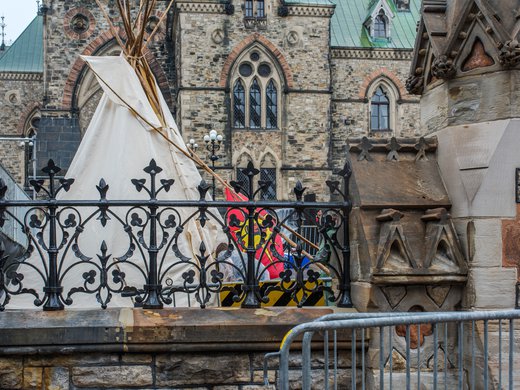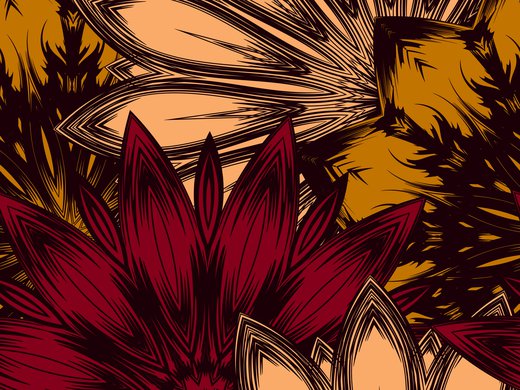This article is part of a series by Indigenous and Canadian scholars that features analysis and personal reflections on the next 150 years of Canada’s history.
The co-existence of English and French is considered a defining feature of Canada as a nation, with both recognized as social languages under the Constitution Act, 1982. Yet there is no explicit mention of Indigenous languages anywhere in Canada’s Constitution, even as the roots of these languages are firmly entrenched in the very soil upon which Canada resides. If Canada intends to restore its relationship with Indigenous peoples and make reconciliation a true part of the next 150 years of its history, then there is a great deal to consider regarding the treatment of Indigenous languages.
The linguistic history of the country is deeply layered. With more than 60 Indigenous languages, Canada is remarkably linguistically diverse. This diversity developed as a result of the complexity of Indigenous cultures and communities and the natural environments in Canada. Indigenous languages partly evolved as Indigenous peoples’ relationship to their living environment grew and changed — a process that continues. Indigenous languages are therefore a living archive — historical vessels foundational to the identity of Indigenous peoples, Canada’s growth as a nation and all expressions of the nation, including its laws, topography and constitution. Since the very beginning, knowledge of Indigenous languages was essential for survival by newcomers and for the establishment of communities and economies, as Arthur J. Ray discussed in his 1998 book, Indians in the Fur Trade: Their Role as Trappers, Hunters, and Middlemen in the Lands Southwest of Hudson Bay, 1660-1870. In the prairie region, for example, Cree was the lingua franca of trade for many years. During pre-Confederation times, the Hudson’s Bay Company worked with Indigenous peoples so that its employees could learn the local dialects, as Henry Kelsey documented in his journal, The Kelsey Papers. The economic system was dependent upon competency in the local dialects of Indigenous peoples.
For Indigenous peoples, languages are recognized as sacred and as living treasures. They are not simply words, but gifts from the Creator that carry a responsibility of transmission. As vehicles of self-understanding, cultural understanding and understanding of the environment, languages are sacred vessels for living life to the fullest. Indigenous languages provide a gateway into oral histories, philosophies, epistemologies, stories and the ceremonies of Indigenous peoples via prayer, song and dance. Language is an important source of development and intellectual creativity that Indigenous peoples have cultivated and passed on for generations. Language facilitates communication that allows for the establishment of relationships within the family unit, with elders and with the broader community. For these and other reasons, Indigenous languages should be supported and recognized as Canada’s national treasures.
Instead, linguistic colonization continues today, as Robert Phillipson wrote in his 1992 book, Linguistic Imperialism. Since Confederation, Canada has attempted to eradicate Indigenous languages through policies of assimilation. The best example of this is described in the six-volume Final Report of the Truth and Reconciliation Commission of Canada that documents the destruction of these languages in the residential school system. The devastating historical and intergenerational impact that Canada’s residential schools have had on Indigenous nations, families and communities was recognized in then prime minister Stephen Harper’s historic apology in 2008. Displacement, denial and erasure of Indigenous languages continues today. Indigenous children still do not have adequate access to their ancestral language and culture in school.
On a more personal note, I am the product of this history. My parents and grandparents were forced to attend residential schools as children. My mother was only three years old when she and her twin sister were removed from our community and placed into a residential school in another province. My mother, her siblings and my grandparents experienced repeated physical abuse and shaming for speaking the only language in which they knew how to communicate. My grandfather recounted that as a young boy, he was often strapped while being forced to say that he would no longer speak our ancestral language of Cree. The physical abuse and shaming took its toll on my parents’ generation, and as a result, our ancestral language was hidden from my siblings and me. In fact, none of my cousins grew up learning to speak Cree either. As a result, a brick wall formed, separating my grandparents’ generation and my generation. For example, I was never able to share my feelings of love and respect for them because I could not speak Cree, and they spoke very little English. Not only did this have an impact on our ability to develop a personal relationship, it also impacted my ability to access cultural knowledge that is embedded in our stories, our traditions, our songs and our philosophies.
It has only been over the past decade that my family has started to reflect on how this period has damaged our language and what we need to do in order to revitalize our languages. Indigenous peoples have collectively reached this juncture. Canada as a country should also have to consider its role and responsibility in the restoration of Indigenous languages.
There are a number of possible options that are worth considering to save Indigenous languages and give them their rightful place in this country. Currently, there are approximately 45 bilingual or multilingual nation-states in the world. Some countries, such as Bolivia, New Zealand and Norway, have recognized the significance of Indigenous languages within their constitution and legislation. Without question, education must be a central part of any language revitalization plan; studies around the world indicate that schools and immersion initiatives must play a central role in the revitalization of Indigenous languages, as Marka-Liisa Olthuis, Suvi Kivelä and Tove Skutnabb-Kangas wrote in Revitalising Indigenous Language: How to Recreate a Lost Generation. When it comes to protecting Indigenous languages, Canada lags behind, but already provides constitutionally protected language rights for children of parents educated in French or English to also be educated in those official languages at public expense. How the language rights of Indigenous peoples will be defined in the Indigenous Languages Act that Prime Minister Justin Trudeau has proposed will send a clear message about Canada’s commitment to the restoration and recognition of Indigenous languages.



